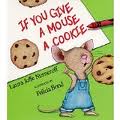By Jake Poinier
If you don’t already read the blog musings of Peter Shankman, founder of HARO (aka Help a Reporter Out), you should. (His twitter handle is @petershankman.) He related a steak-AND-sizzle customer service tale yesterday, “The Greatest Customer Service Story Ever Told, Starring Morton’s Steakhouse.”
At my last corporate job, we had a regular Monday morning meeting that always closed with an employee or two sharing a positive or negative customer service story from the previous week—something that happened at the bank, grocery store, car dealer, whatever. Some stories were better than others, but the bottom line was that it subliminally focused your attention on finding examples of people going the extra mile.
And that, in turn, gave you a sense of what you could do in your own job to make the company’s custom publication clients happier.
Mind you, it doesn’t escape me that Morton’s has a huge advantage over the average freelancer—steak, shrimp, and potatoes grab attention in ways that a clever headline, eye-catching design layout, or stunning photograph can’t really touch. Nonetheless, the same principles apply:
- Customers put as much weight on the process as they do on the product—so make sure your project management is as rock solid as your creative output.
- A client in need is a slam-dunk opportunity for you to be a hero.
- If you can do your job in a way that gets people talking, that 3rd party recommendation is a lot more powerful than tooting your own horn. By now, this Morton’s story has been read by hundreds of thousands of people via Shankman’s various social media channels.
Do you have a customer service story that has impacted the way you do business? Please share in the comments!
Jake Poinier is the owner of Boomvang Creative Group and writes a freelance advice column as Dr. Freelance.

 By Jake Poinier
By Jake Poinier By Jake Poinier
By Jake Poinier